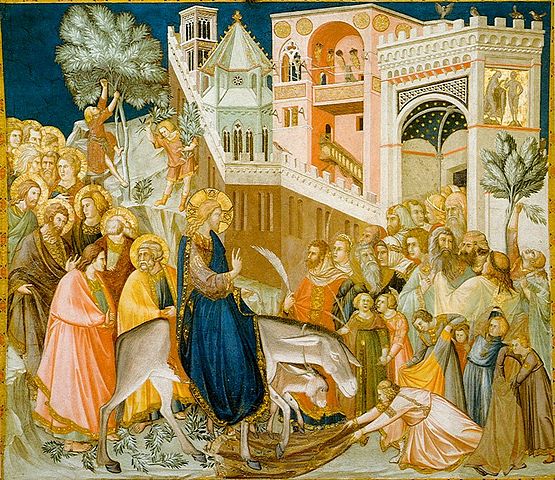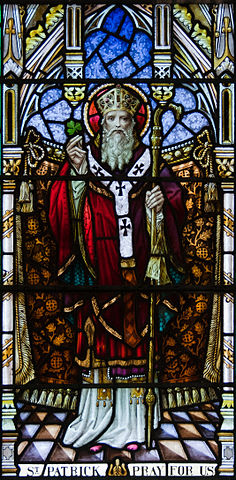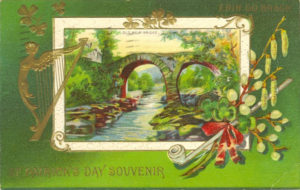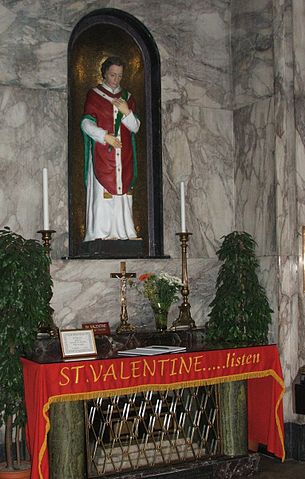[This has been modified from 2023 with corrections in grammar, punctuation, additional links, updating sources, and adding new text]
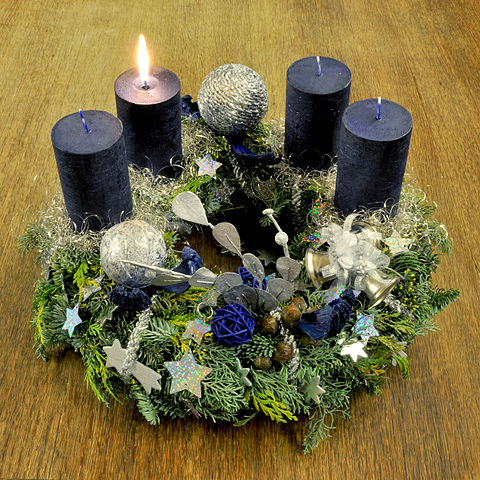
Photo :Micha L. Rieser(Wikimedia Comos)
O come, O come, Emmanuel,
And ransom captive Israel,
That mourns in lonely exile here
Until the Son of God appears.
Rejoice! Rejoice!
Emmanuel shall come to thee, O Israel.
Advent is the beginning of the liturgical year for Roman Catholics and many Christian denominations. It encompasses the four weeks (Sundays and weekdays) leading up to Christmas Day. Counting back four Sundays from Christmas Day will get you to the first Sunday of Advent. Depending on the calendar day Christmas falls on, Advent usually begins near the feast of St. Andrew the Apostle celebrated on 30 November. Eastern Orthodox, since it follows the Julian calendar, will start their Advent later as Christmas Day falls 13 days after the current Gregorian calendar.
Advent comes from the Latin word adventus, meaning coming or coming to, is a time of preparation for the birth of Christ and a reminder that Jesus will return. During this period, Christians are reminded not to be weighed down or distracted by the cares of this world. Like Lent, Christians are called to reflect on our actions and seek penance. We also should prepare our hearts for the full joy of Christmas. We should not allow our souls to be burdened with predictions of events yet to come, but to be alert and ready. During this period, Catholic priests wear violet vestments, except on the Third Sunday of Advent (Gaudete Sunday) when rose may be worn. Altars will be less decorated than usual during this time as well.
One of the symbols of Advent is the Advent wreath. This wreath has four candles (battery operated ones are acceptable) and are lit for each Sunday in Advent. Usually, a prayer is also spoken while lighting the prayer and often families will do it together. Most candles are purple, but one will either be white or rose for Gaudete Sunday. The popular Advent calendar is to not only marks down the days till Christmas, but also days of devotion during the season. A Christmas novena is also done. The traditional one is the St. Andrew Christmas Novena which begins on 30 November (the feast day of St. Andrew) and runs till Christmas Eve. A nine -day novena begins on December 16 and goes till Christmas Eve. Many Latin American countries celebrate this as Las Posadas, and it is popular in the Philippines as well (called Sambang Gabi).
There is specific music for the Advent season that is often played in Catholic and Christian churches during religious services. Music such as Silent Night, Adeste Fidelis, Hark! The Herald Angels Sing will not be heard until Christmas Eve and Christmas Day services. Secular songs such as White Christmas, Rudolph the Red Nosed Reindeer are reserved for Christmas concerts (which are sometimes held in churches) are not sung at all during religious services. While Christmas decorations may be outside the church, you will not see Christmas trees in the main area of the church where mass is celebrated during Advent. This has nothing to do with any connotation that a Christmas tree is pagan but rather that during Advent we must be solemn in observing it. So, a lighted Christmas tree is often near the entry or just inside the entry (if they have one). This has been the tradition that Saint Pope John Paul II started when he got a Christmas tree from his native country of Poland.Christmas decorations are generally put up usually on the Fourth Sunday of Advent and it is then you may see Christmas trees inside the church.
Flowers and wreaths are acceptable near the altar and not on it. Advent wreaths are often placed near the altar and lighted before the service begins. A Christmas crib or nativity scene may also be displayed as well.
For More Information
Infoplease, “Advent: Dates, Traditions, and History,” InfoPlease, last modified November 18, 2021, http://www.infoplease.com/spot/advent1.html.
Justin Holcomb, “What Is Advent? The Season’s History, Meaning and Traditions,” Christianity.Com, last modified November 18, 2024, https://www.christianity.com/wiki/holidays/what-is-advent.html.
“What Is Advent?” USCCB. https://www.usccb.org/prayer-worship/liturgical-year/advent.


